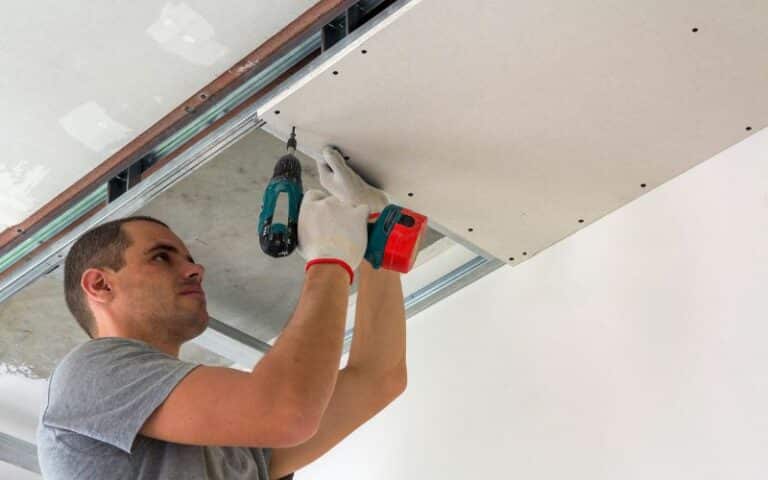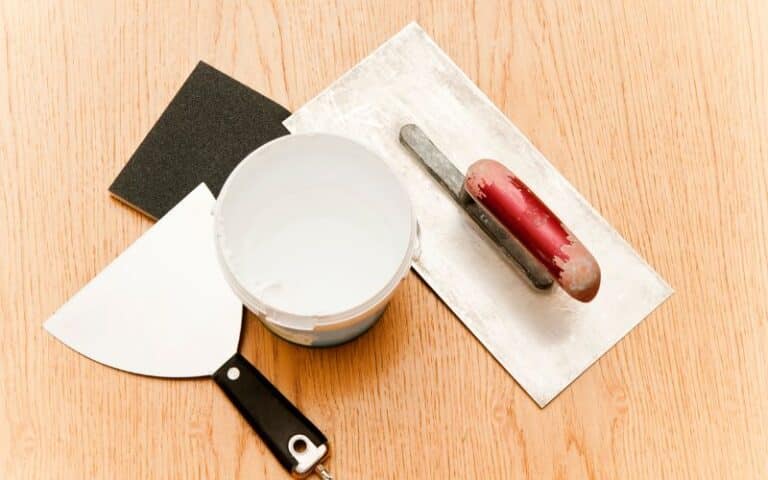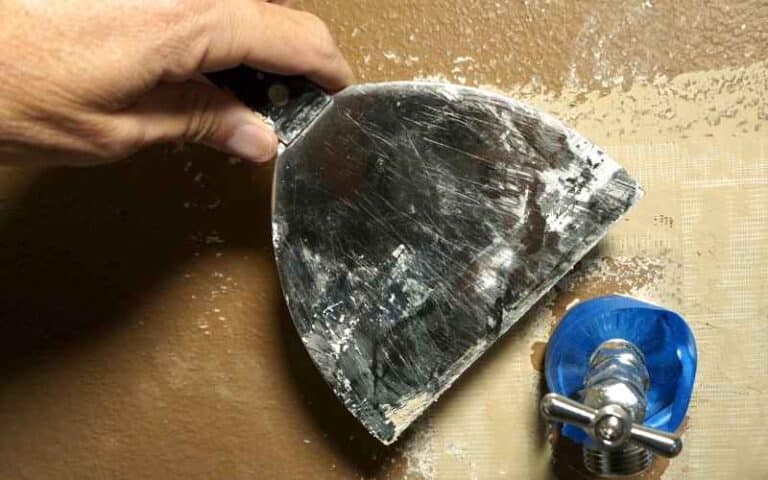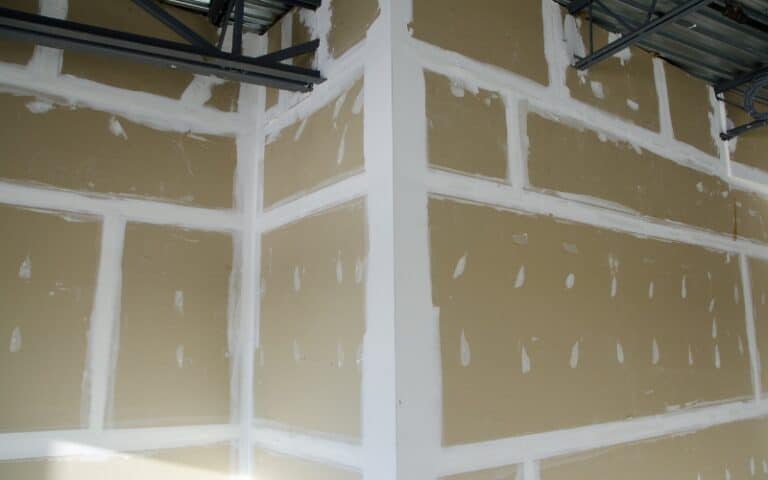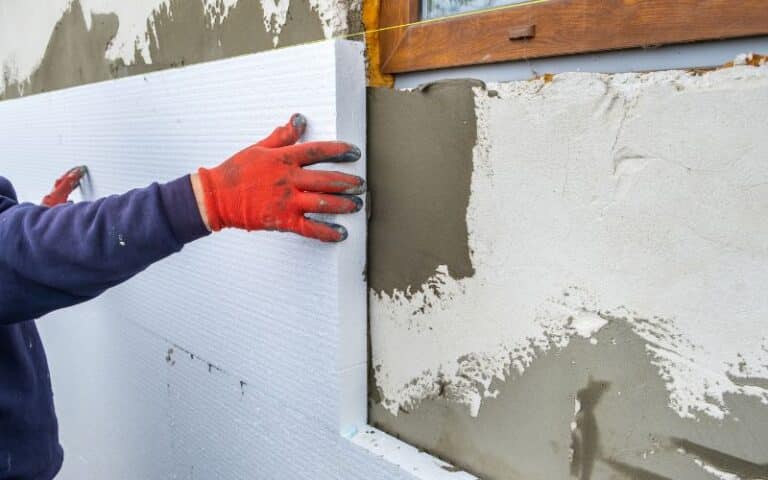Drywall installation requires cutting drywall sheets to fit into a space, and one of the common tools used for this task is a utility knife.
However, you may wonder if a utility knife is effective for cutting drywall, especially since drywall is relatively thick and sturdy.
Yes, you can cut drywall with a utility knife. Using a utility knife to cut drywall is a common method many DIYers and professionals use. However, the key to achieving a clean and precise cut is using the correct technique and having a sharp blade.
This article will explore the steps and tips for cutting drywall with a utility knife. We will find out the benefits of using this tool for your next home improvement project.
We’ll also cover everything you need to know, from the tools you’ll need to the techniques for making clean and precise cuts.
Ready for a Drywall Quiz?
Do Drywalls Need Special Cutting Blades?
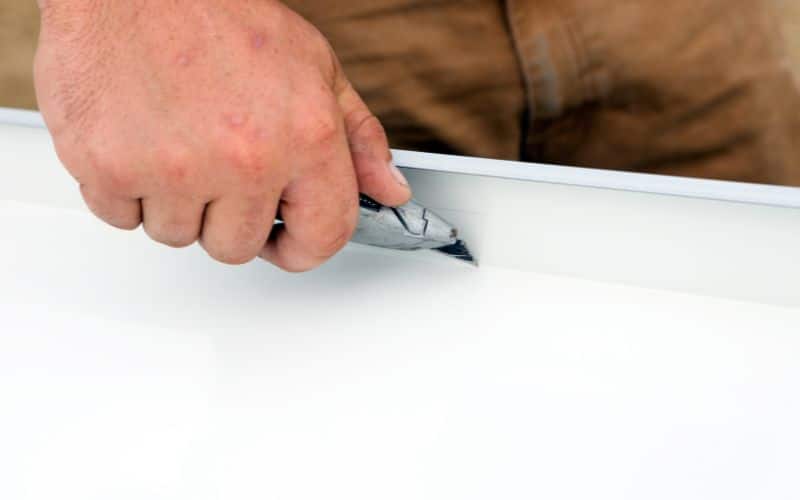
Drywalls require special cutting blades to ensure clean cuts and avoid material damage.
Using a blade specifically for cutting drywall, such as a drywall saw, will make the process easier and prevent the blade from getting stuck.
These blades typically have a serrated edge that can easily cut through the soft gypsum core of the drywall without damaging the paper covering.
However, using a regular utility knife blade or other types of saw blades may result in uneven cuts, tearing, or even cracking of the drywall.
Drywall is a common material used in the construction industry for walls and ceilings. It is made of gypsum plaster sandwiched between two sheets of heavy paper.
When cutting drywall, many people wonder if special cutting blades are needed. The answer depends on the cutting tool you use.
A utility knife or a box cutter is commonly used to cut drywall. However, using a regular blade can dull the blade quickly and may not provide a clean cut.
Therefore, using a specialized blade for cutting drywall, such as a drywall knife or a jab saw, is suitable.
A drywall knife is a long, flat blade with a pointed end and a handle. It is specifically designed to cut through drywall cleanly without damaging the surrounding area.
On the other hand, a jab saw is a handheld saw with a pointed tip, and serrated edge used to cut through drywall.
While using a specialized cutting blade may make the job easier and result in a cleaner cut, it is not always necessary.
Some professionals prefer to use a utility knife or box cutter with a fresh blade to cut drywall.
The key is to ensure the blade is sharp and to use the correct technique to avoid tearing or damaging the drywall.
A utility knife with a fresh blade can also be used effectively to cut drywall, provided it is sharp and used correctly.
Can-Utility Knives Cut Drywall?
You can use utility knives to cut drywall, but using the right blade and method is essential.
Moreover, the blade must be sharp and sturdy enough to cut through the drywall without bending or breaking.
A standard utility blade can work, but specialized drywall blades are recommended for a cleaner cut.
Drywall is a brittle material; using the wrong blade can result in a jagged or uneven cut.
Utility knives have different blade types, including straight and hooked blades.
For cutting drywall, it is suitable to use a hooked blade, also known as a drywall blade. A drywall blade has a curved shape that allows for smoother and more precise cuts.
The hooked shape of the blade also prevents it from digging too deeply into the drywall, reducing the risk of damaging the underlying structure.
When using a utility knife to cut drywall, it is important to use a straight edge or T-square to ensure a straight and accurate cut.
It is also important to wear protective eyewear and a dust mask to prevent injury and inhalation of dust.
While a utility knife can be used to cut drywall, it may not be the most efficient or precise tool for the job.
Other tools, such as a drywall saw or rotary tool with a drywall bit, may be more suitable for larger or more complex cuts.
How to Cut Drywall With Utility Knives?
To cut drywall with a utility knife, first, you need to measure and mark the cut line.
Then, score the drywall along the cut line with a utility knife, making multiple passes until the blade penetrates through the paper.
Finally, snap the drywall along the scored line, and use the utility knife to trim any rough edges.
Sharp blade-making multiple passes are important to avoid tearing or damaging the drywall.
Cutting drywall with a utility knife is popular among DIY enthusiasts and professionals.
Here are the steps to cut drywall with a utility knife.
#1. Measure and Mark the Cut:
Use a tape measure and pencil to mark the dimensions of the cut you want to make on the drywall.
It’s crucial to make precise measurements to avoid creating unnecessary cuts.
#2. Score the Drywall:
Hold the drywall firmly in place with one hand and use a utility knife to score the drywall along the marked line.
To score, apply firm pressure and run the blade along the drywall, making a shallow cut.
#3. Snap the Drywall:
Once the drywall has been scored, use both hands to bend the drywall back along the scored line until it snaps. If the drywall does not snap easily, re-score it and try again.
#4. Cut the Paper Backing:
Once the drywall is snapped, use the utility knife to cut through the paper backing on the back side of the drywall.
This will release the cut piece from the rest of the drywall.
#5. Cut Out Any Holes:
To cut out holes in the drywall, such as for electrical boxes or vents, first mark the outline of the hole on the drywall.
Then, score along the line as before. Use a keyhole saw or jab saw to cut out the hole.
#6. Smooth the Edges:
After cutting the drywall, use a sanding block to smooth the edges of the cut. This will help to prevent rough edges and create a cleaner finish.
It’s important to note that using a utility knife to cut drywall requires some practice and skill.
Additionally, drywall saw or rotary tool may be more efficient and effective for larger or more complex cuts.
Eight Best Alternatives for Drywall Knives
When cutting drywall, a drywall knife may be the go-to tool for many people. However, several alternatives to drywall knives can also effectively cut drywall.
Here are eight of the best alternatives for cutting drywall.
#1. Utility Knife:
A utility knife is a versatile cutting tool that can be used for many different tasks, including cutting drywall. Use a sharp blade and change it frequently to ensure clean cuts.
#2. Jab Saw:
A jab saw, also known as a drywall saw, has a pointed tip for cutting drywall. It can be used to make straight or curved cuts in drywall.
#3. Rotary Cutter:
A rotary cutter is a tool commonly used for cutting fabric and can also be used for cutting drywall. It is handy for cutting circular or curved shapes.
#4. Oscillating Tool:
An oscillating tool is a versatile tool that can be used for cutting, sanding, and grinding. It is often equipped with a drywall blade for cutting drywall.
#5. Rotozip:
A Rotozip is a rotary tool designed explicitly for cutting drywall. It is similar to a router and can make intricate cuts in drywall.
#6. Keyhole Saw:
A keyhole saw has a long, narrow blade for cutting small, intricate shapes. You can use it to make cuts in drywall, especially for electrical boxes.
#7. Hacksaw:
A hacksaw is a saw with a fine-toothed blade commonly used to cut metal. You can also use it to cut drywall.
#8. Japanese Saw:
A Japanese saw is a type of saw with a thin, flexible blade designed for precision cutting. It can be quite helpful in making clean cuts in drywall.
Each of these alternatives has its unique advantages and disadvantages. Moreover, the best tool for the job will depend on the specific project and personal preference.
It’s important to use a tool that is comfortable and safe to use, as well as efficient in making clean cuts in drywall.
Here’s a table comparing different drywall knife alternatives and their advantages and disadvantages over traditional drywall knives.
| Drywall Knife Alternative | Advantages | Disadvantages |
|---|---|---|
| Jab Saw | – Cuts through thicker materials- Can be used for rough cuts | – Not suitable for cutting straight lines |
| RotoZip | – Cuts intricate shapes and patterns with ease- Allows for more precision | – Requires more skill to use- Noisy and creates a lot of dust |
| Circular Saw | – Cut through thicker material- Allows for more precision- For a variety of other tasks | – Expensive- Noisy |

